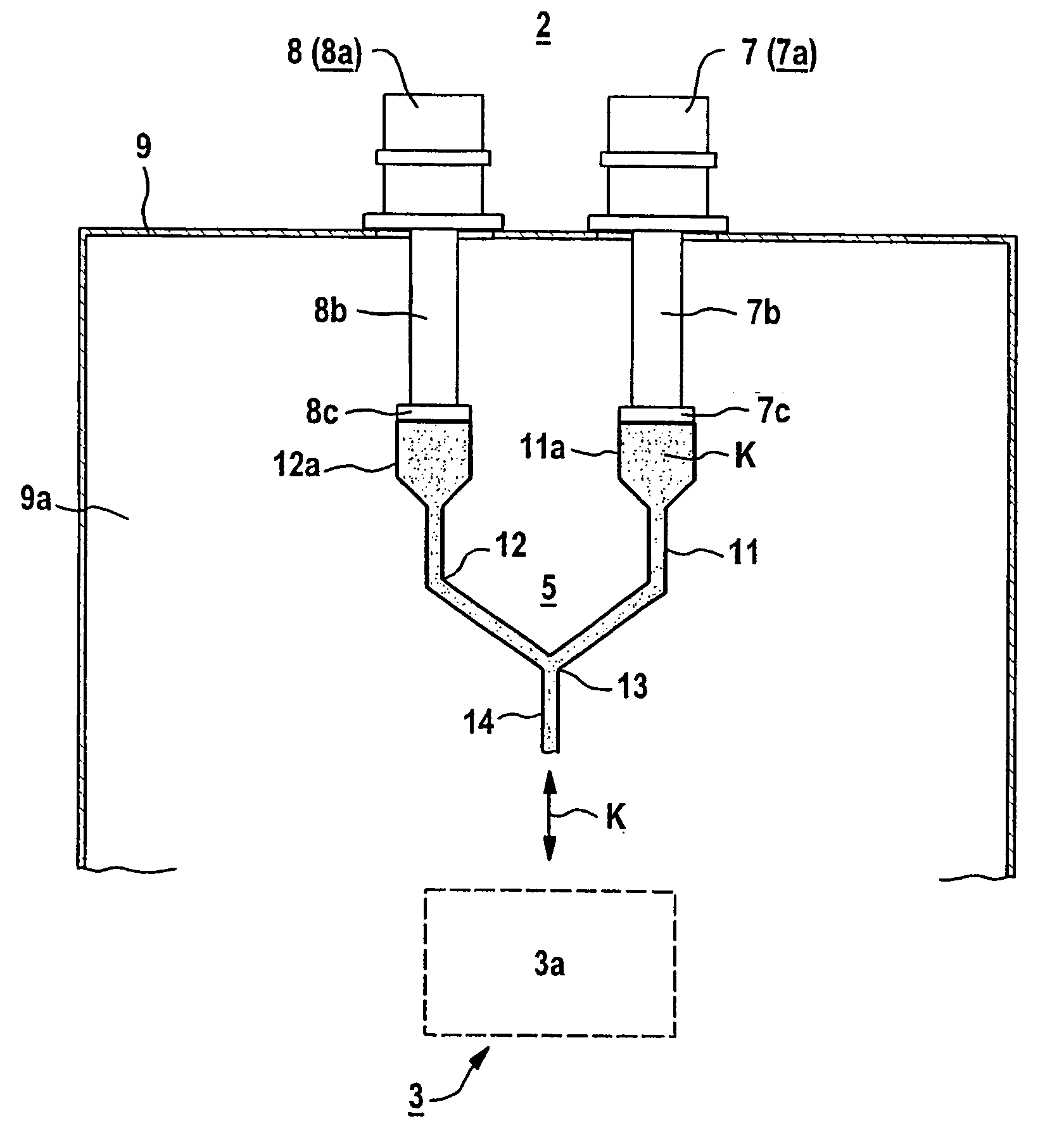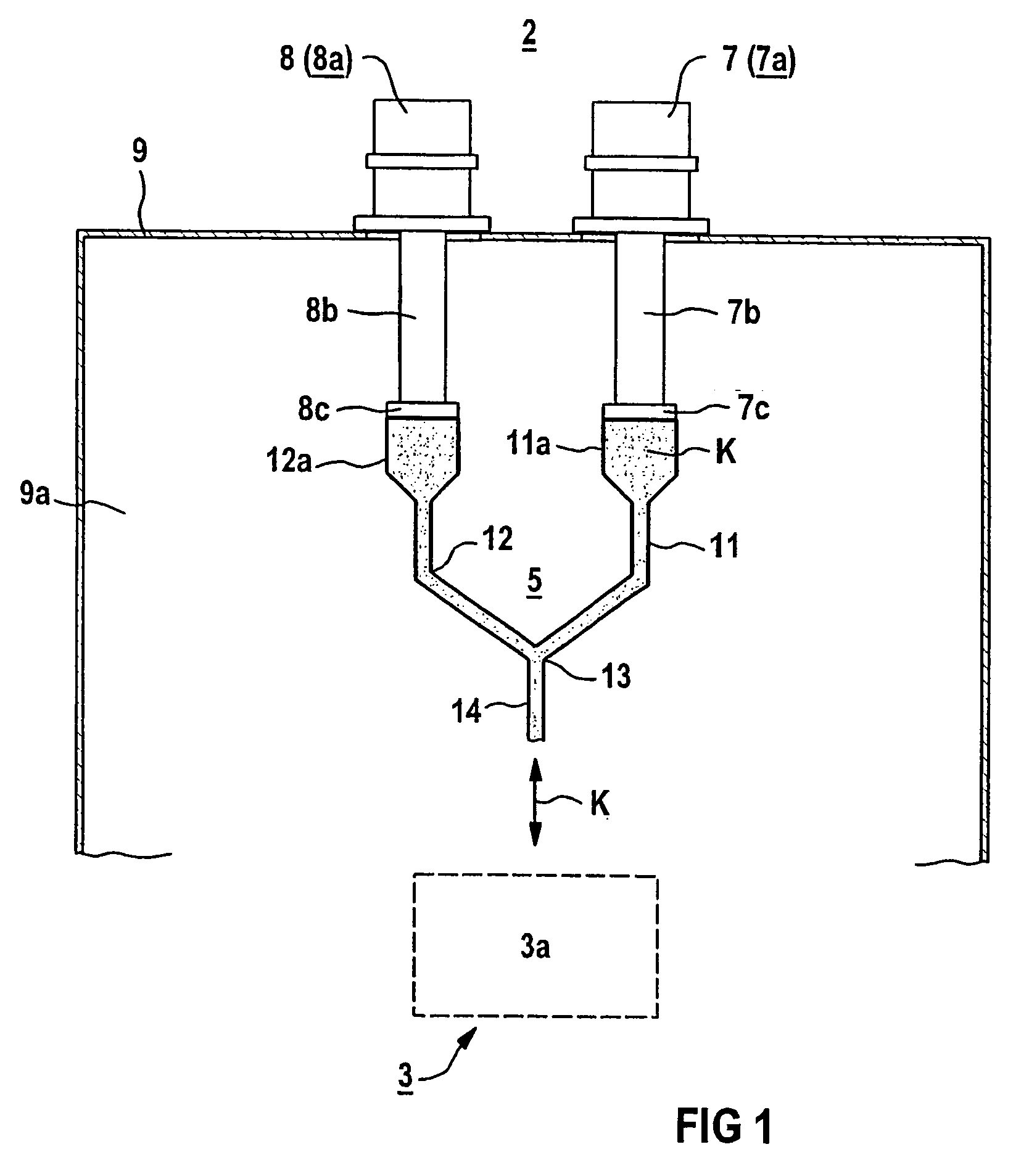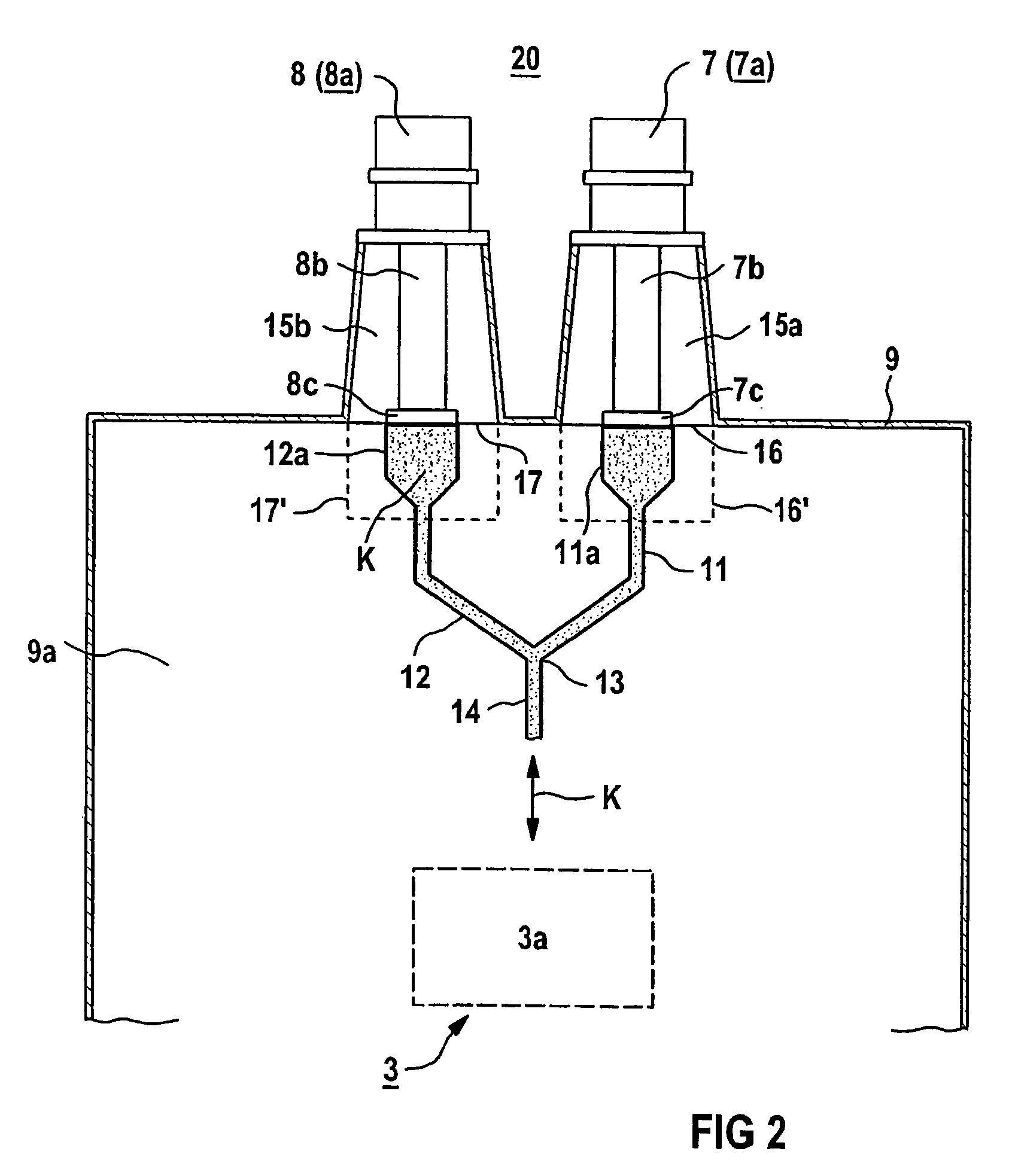Refrigeration plant for parts of installation, which are to be chilled
a technology for refrigeration plants and parts, applied in the direction of superconducting magnets/coils, domestic cooling apparatus, magnetic bodies, etc., can solve the problems of increasing the risk of significant thermal conduction losses, unable to maintain the operating state of the winding which is to be cooled, and generally having to be switched o
- Summary
- Abstract
- Description
- Claims
- Application Information
AI Technical Summary
Benefits of technology
Problems solved by technology
Method used
Image
Examples
Embodiment Construction
[0022]Reference will now be made in detail to the preferred embodiments of the present invention, examples of which are illustrated in the accompanying drawings, wherein like reference symbols refer to like elements throughout.
[0023]The refrigeration plant according to the invention can be used wherever a plurality of refrigeration sources are provided for cooling even extensive parts of any desired installation. Their parts which are to be cooled may be metallic or nonmetallic, electrically conductive, in particular superconducting, or also nonconductive. In one specific application, the parts to be cooled are a superconducting winding of an electrical machine (cf. for example the abovementioned WO 00 / 13296 A or U.S. Pat. No. 5,482,919 A) or a superconducting magnet (cf. for example U.S. Pat. Nos. 5,396,206 A or US 6,246,308 B1).
[0024]A further application may be for two cold heads to be operated simultaneously to save time during cooling of the parts of an installation that are to...
PUM
| Property | Measurement | Unit |
|---|---|---|
| temperature | aaaaa | aaaaa |
| critical temperatures Tc | aaaaa | aaaaa |
| temperature | aaaaa | aaaaa |
Abstract
Description
Claims
Application Information
 Login to View More
Login to View More - R&D
- Intellectual Property
- Life Sciences
- Materials
- Tech Scout
- Unparalleled Data Quality
- Higher Quality Content
- 60% Fewer Hallucinations
Browse by: Latest US Patents, China's latest patents, Technical Efficacy Thesaurus, Application Domain, Technology Topic, Popular Technical Reports.
© 2025 PatSnap. All rights reserved.Legal|Privacy policy|Modern Slavery Act Transparency Statement|Sitemap|About US| Contact US: help@patsnap.com



